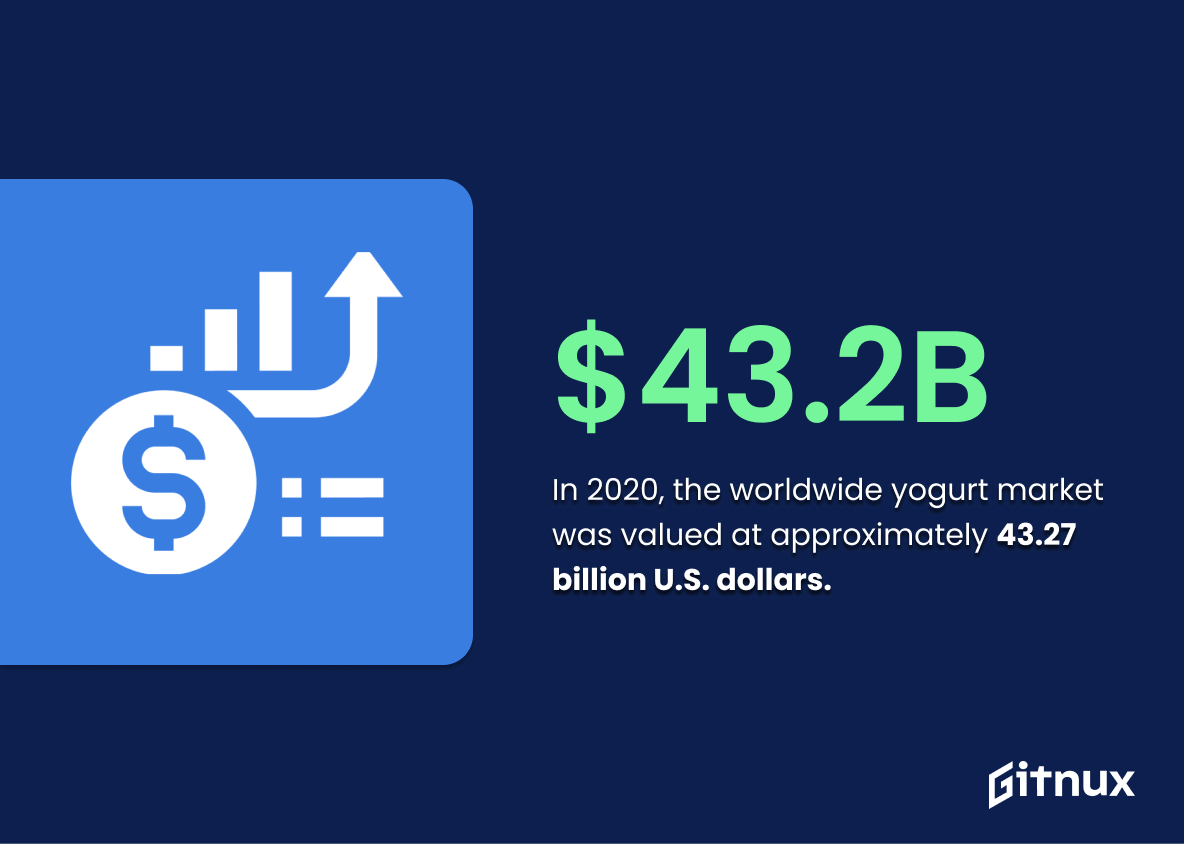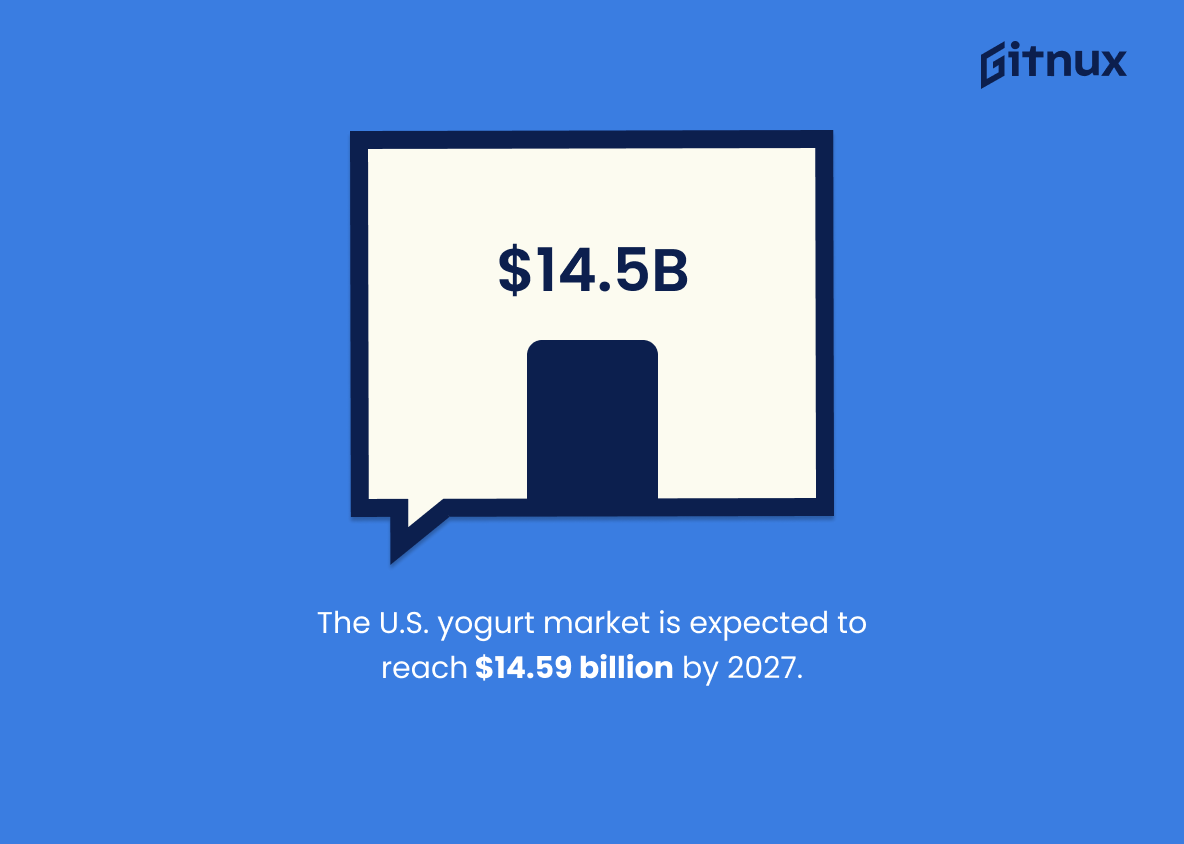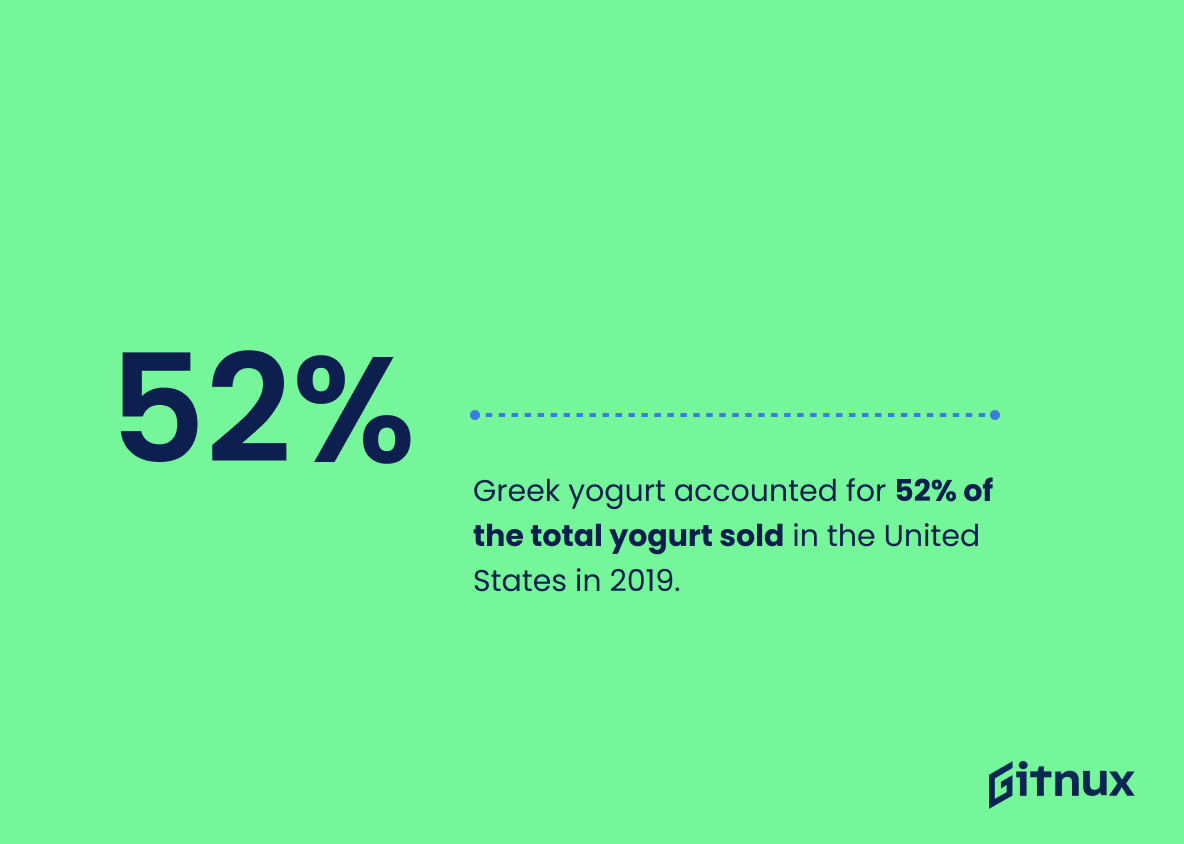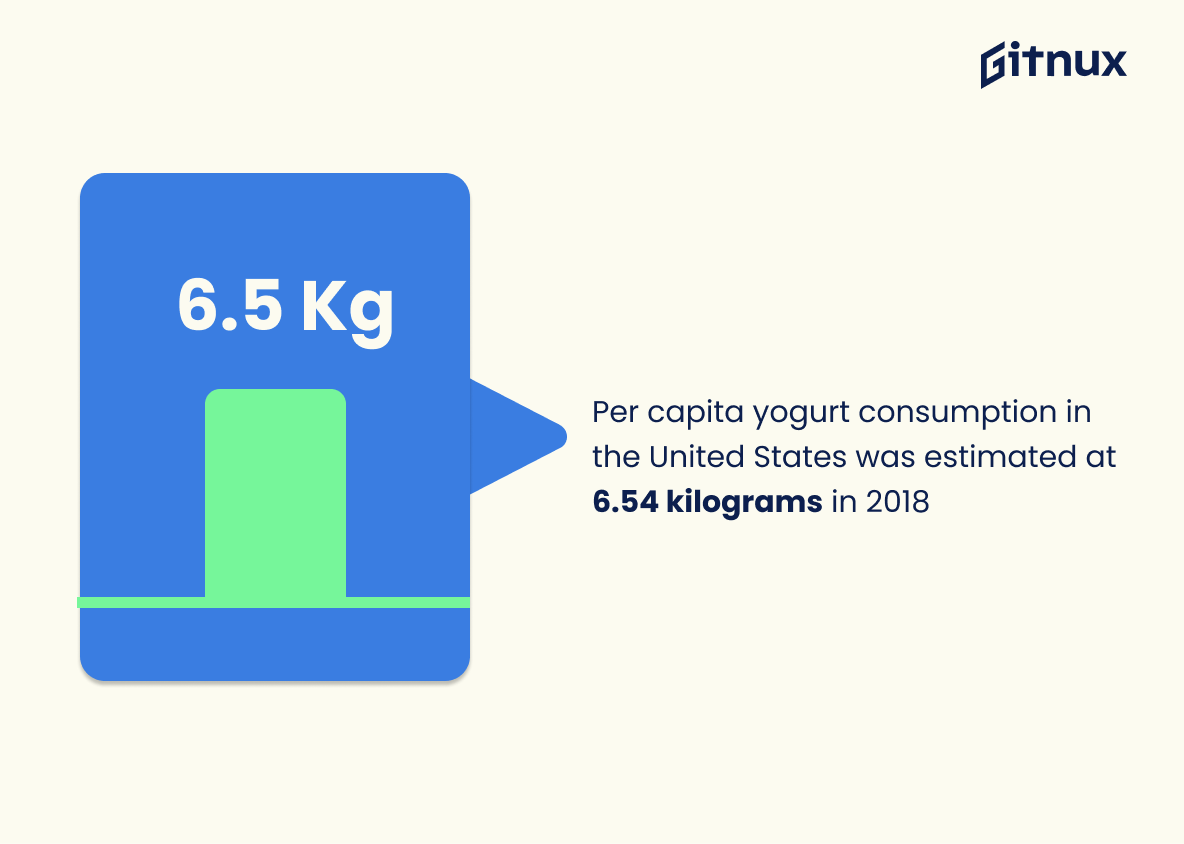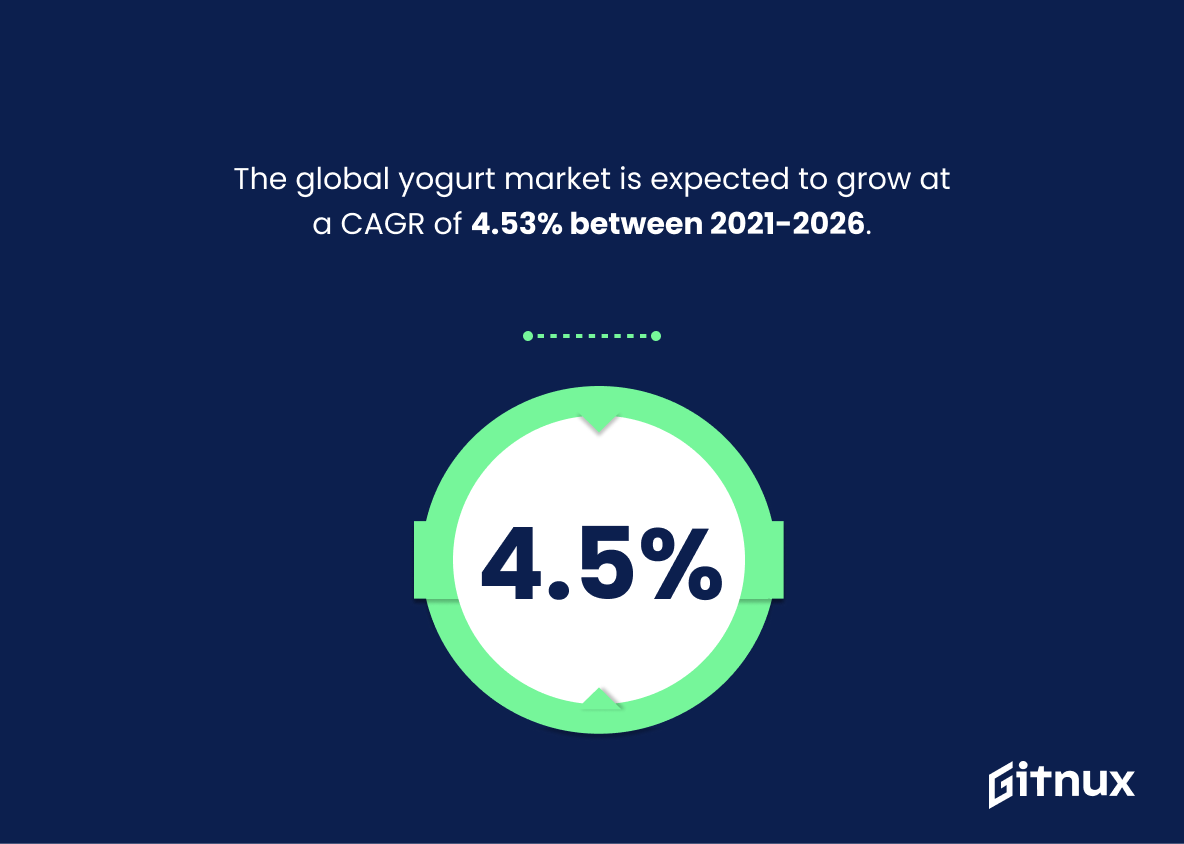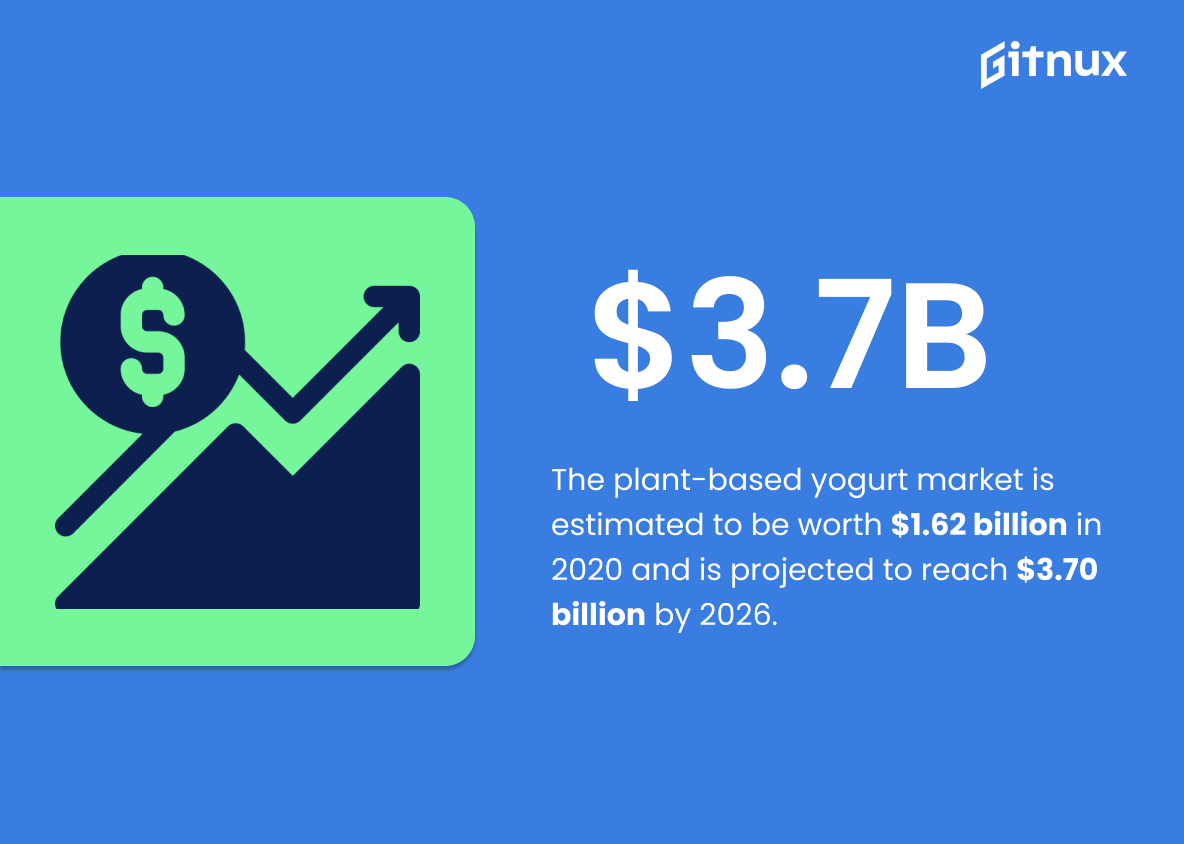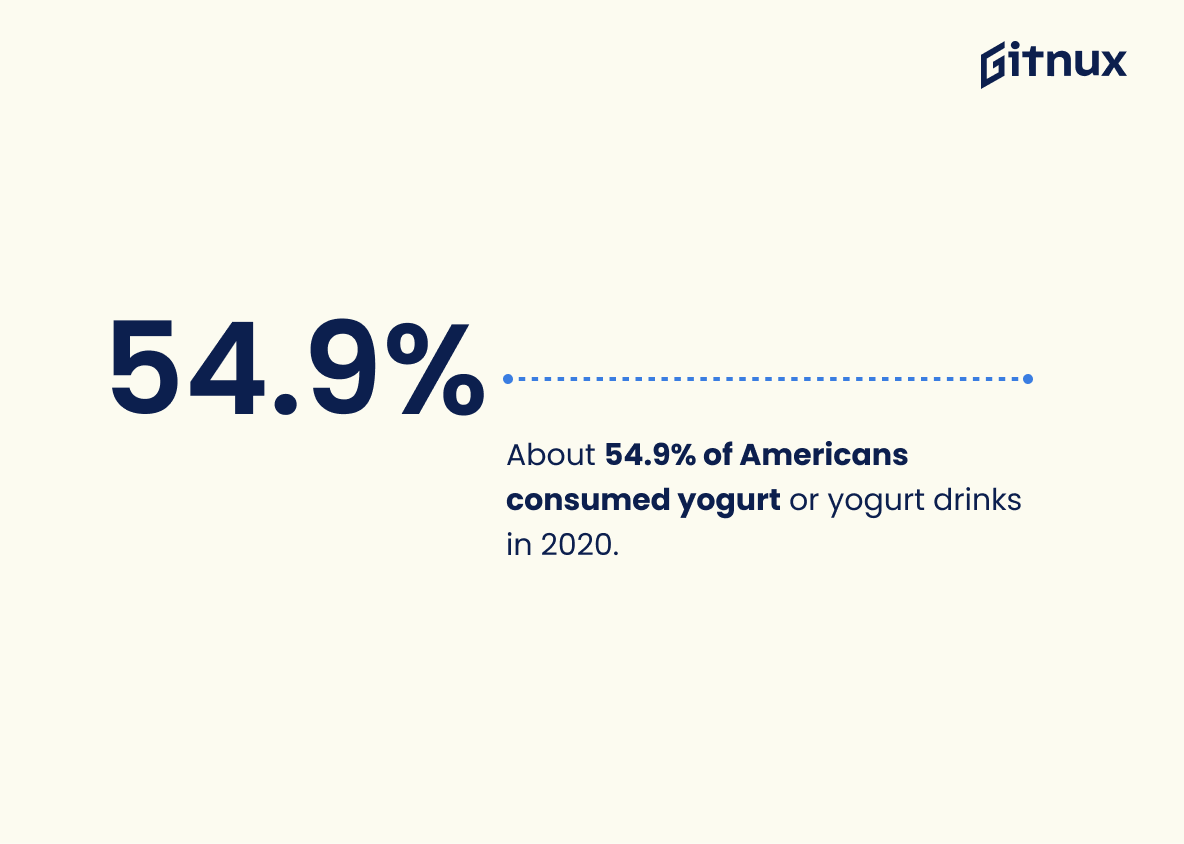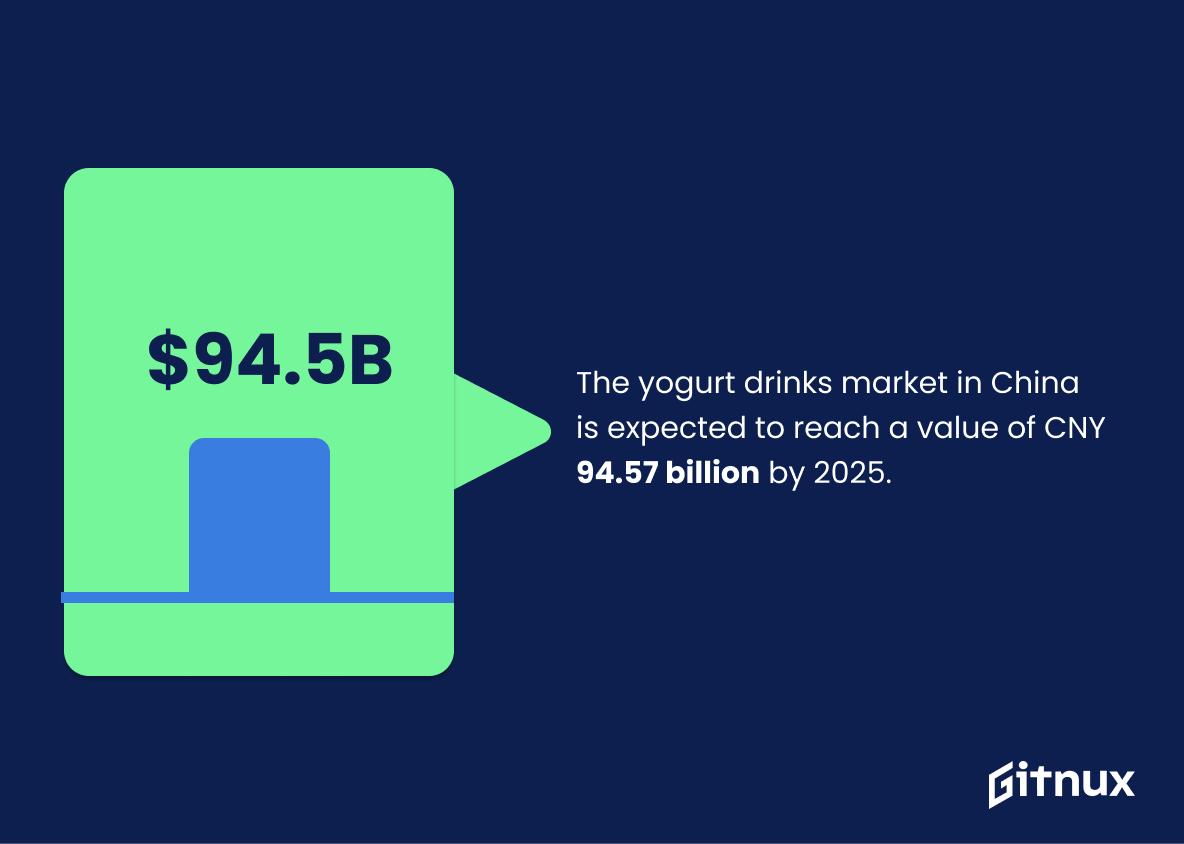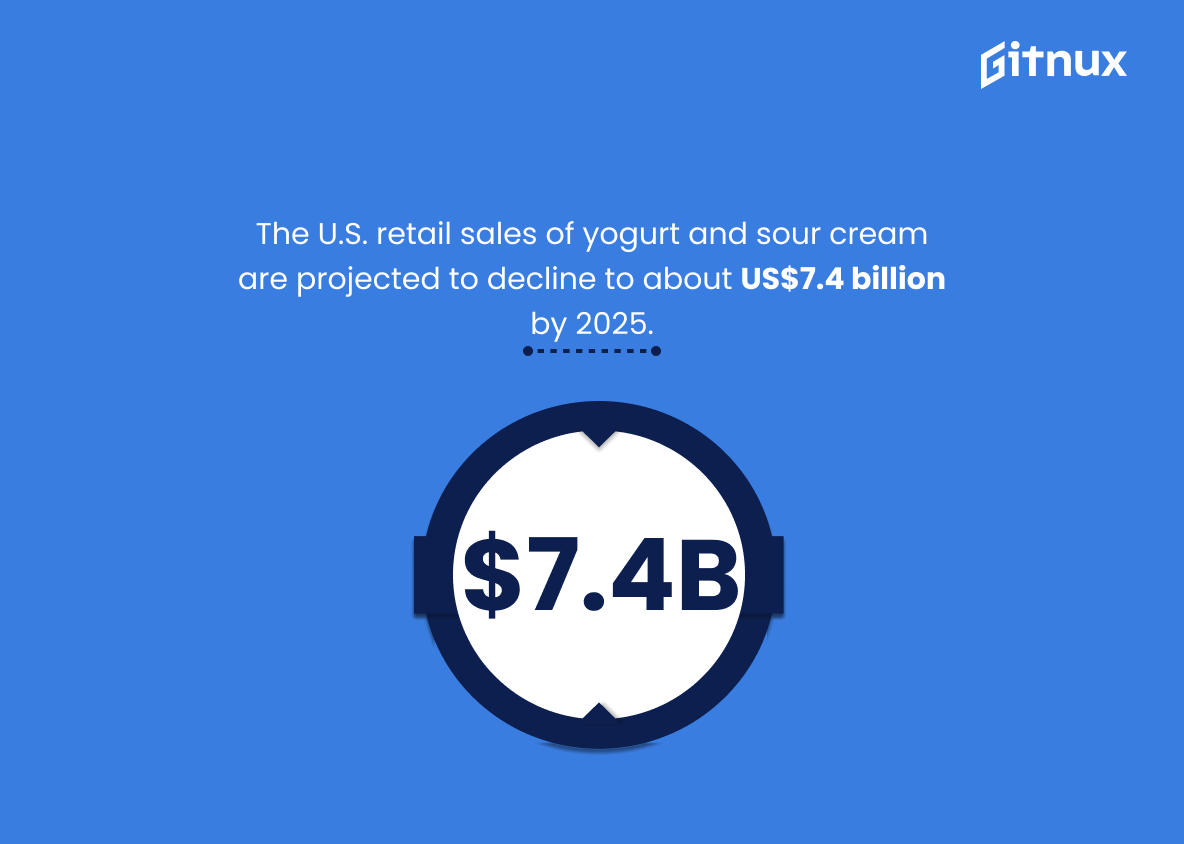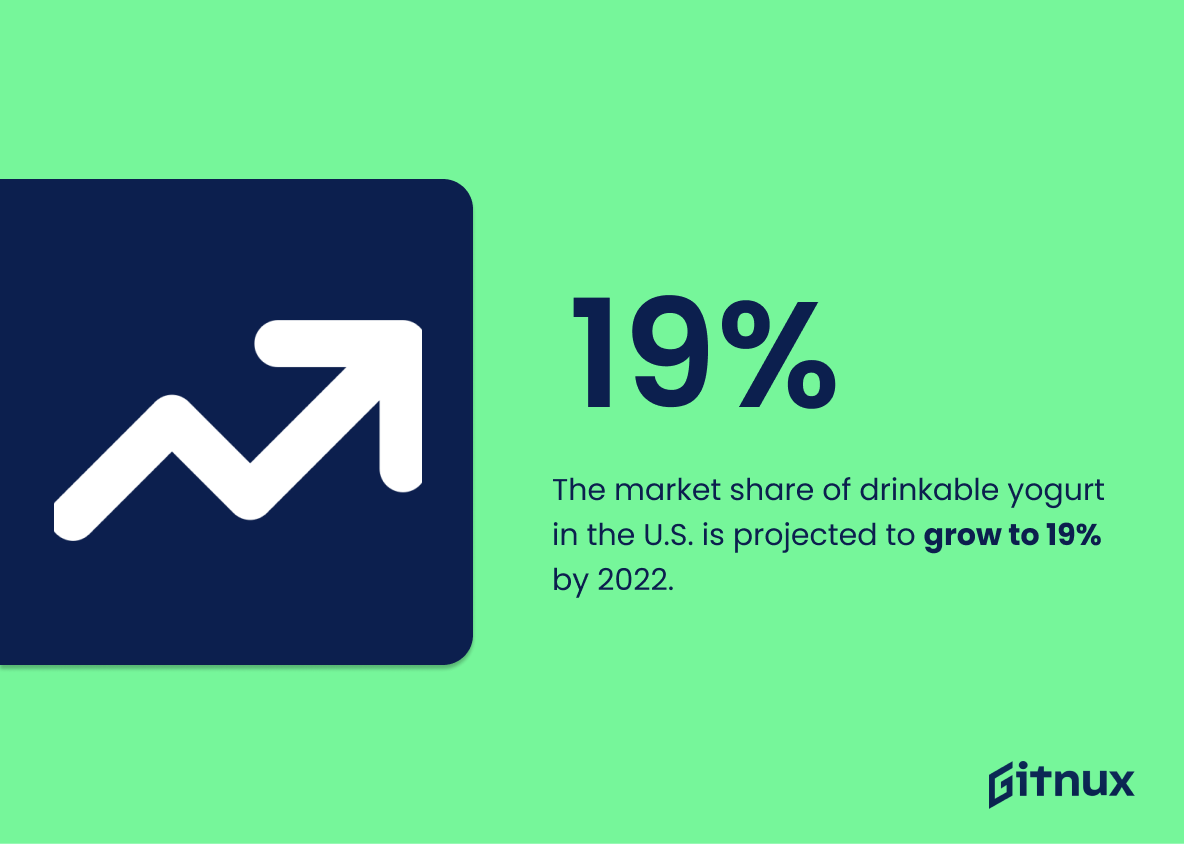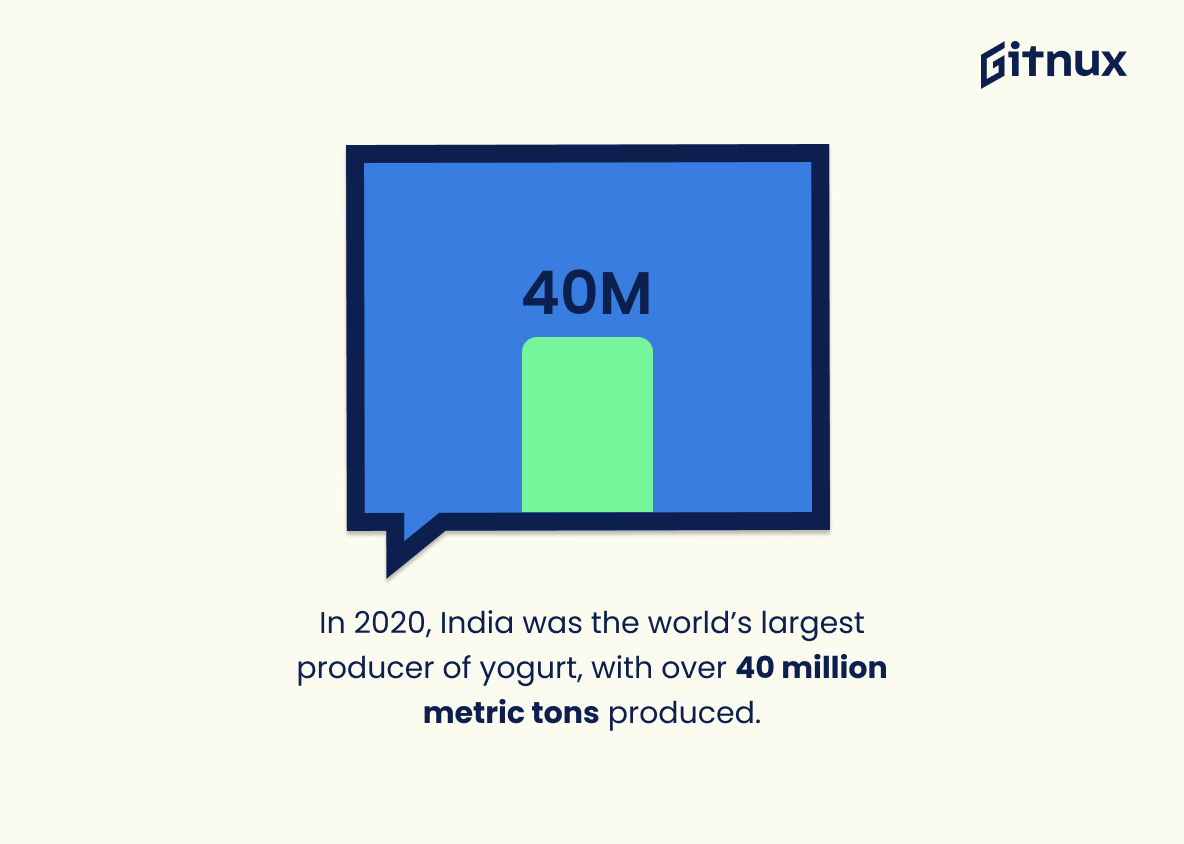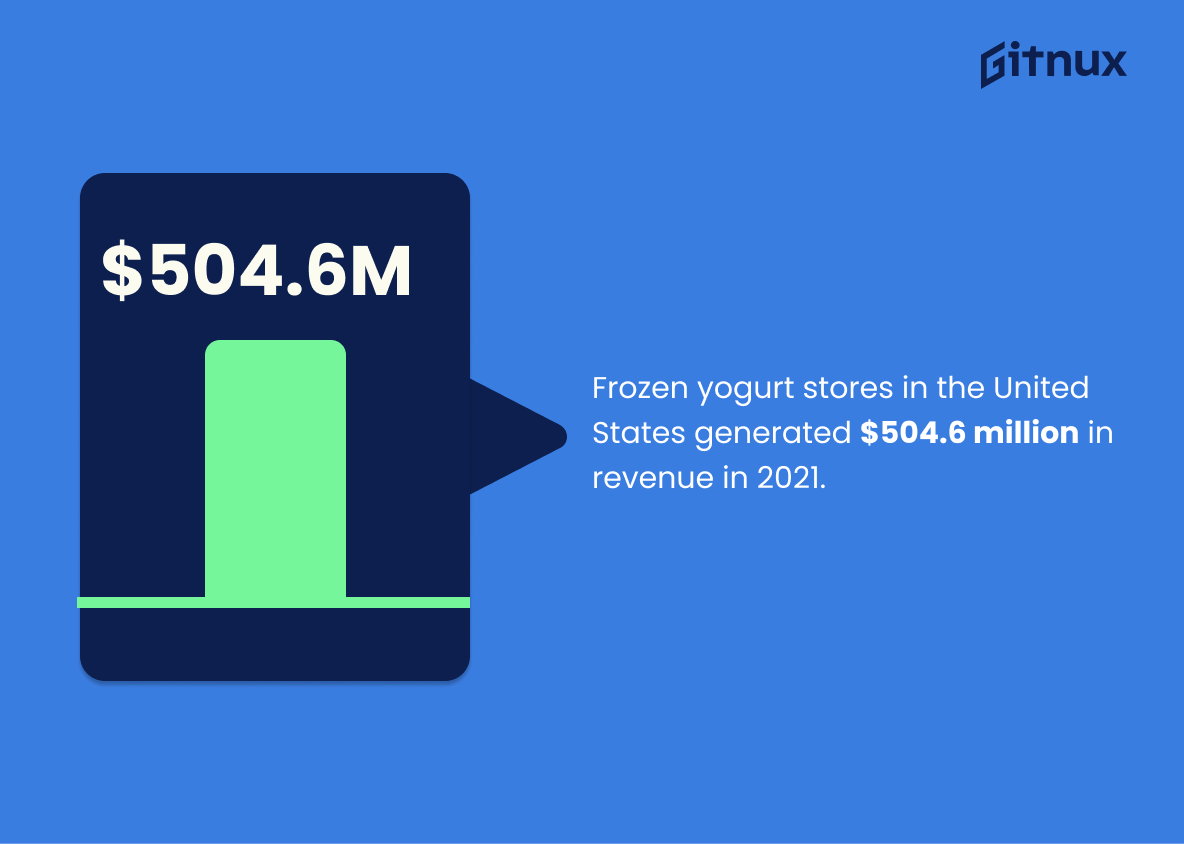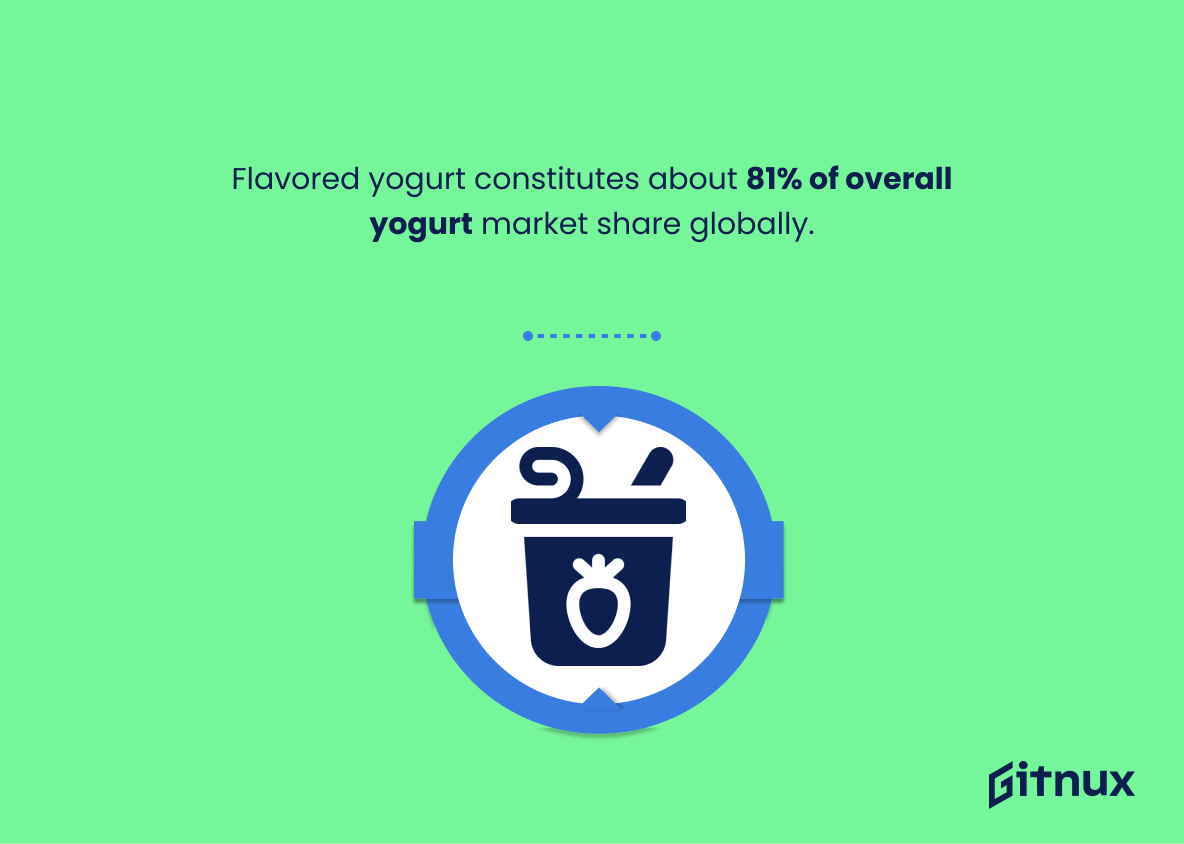Welcome to the dynamic and downright delicious world of yogurt, a dairy staple that has been delighting taste buds for millennia. The yogurt industry, ever-evolving and constantly innovating to meet the diverse palates of consumers worldwide, is an intriguing sector to dissect. Not only has it remained steadfast amidst changing dietary trends, but it has also thrived, generating impressive figures that warrant a comprehensive examination. Dive into this insightful blog post as we delve deep into the yogurt industry statistics, exploring the fascinating narratives these numbers narrate about consumer habits, market growth, competition, and innovation in the sector. Brace yourself for an informative ride through the trends, trials, and triumphs of the global yogurt industry.
The Latest Yogurt Industry Statistics Unveiled
In 2020, the worldwide yogurt market was valued at approximately 43.27 billion U.S. dollars.
Highlighting the staggering 43.27 billion U.S. dollars valuation of the worldwide yogurt market in 2020 underlines the mammoth potential and vitality of this industry. It’s a testament to the popularity and global demand of yogurt, underpinning how this dairy delight is not just another culinary fad, but rather an ingrained part of the food culture and a staple in consumer diets across the planet. This figure brings home the hefty economic weight of the yogurt industry, and its significance in generating revenue, fueling growth, creating jobs and driving innovation. This deep dive into the financial heartbeat of the yogurt world, with its billion-dollar pulse, sets the stage for a deeper understanding and appreciation of the yogurt market’s impact on economies and societies alike. In a blog post on Yogurt Industry Statistics, it serves as a powerful anchor point around which to explore and analyse trends, challenges, opportunities and forecasts shaping this lucrative landscape.
The U.S. yogurt market is expected to reach $14.59 billion by 2027.
Undoubtedly, envisioning an impressive $14.59 billion U.S. yogurt market by 2027 serves as a potential goldmine for industry stakeholders. This intriguing prognosis not only underscores the unprecedented growth of this sector, but also beckons entrepreneurs and investors alike to seize the vast opportunities lurking beneath. As yogurt continues to reinvent its identity, from a simple dairy product to a gourmet, health-centric delicacy, this projection offers a glimpse into consumers’ evolving preferences and burgeoning demands. Furthermore, it serves as a yardstick for industry players to evaluate their current strategies and innovate towards the 2027 goal, ultimately shaping the yogurt industry’s future trajectory.
Greek yogurt accounted for 52% of the total yogurt sold in the United States in 2019.
Diving headfirst into the creamy world of the yogurt industry, we find ourselves confronted by an interesting revelation. Ponder this, in the vast dairy landscape of 2019, Greek yogurt emblazoned itself, accounting for 52% of total yogurt sales in the United States. Why is this number crucial, you ask? Well, the story of yogurt is not merely one of lactose and probiotics; it’s a tale of consumer preferences, market trends, and industry dominance.
A pulsating 52% is more than just a statistic—imagine it as a Greek yogurt tsunami surging forward, reshaping the dairy shoreline of America. This percentage cements Greek yogurt as a reigning superstar, a leading actor performing on the dairy stage. So the next time you find yourself in the yogurt aisle, remember, you aren’t just looking at a fridge stocked with pots of culture. You’re observing the aftershock of a seismic shift towards Greek yogurt, a dairy-dynamic that is driving the industry forward and forging new pathways for products that delight our taste buds.
In light of this immense market share, it’s clear industry players and stakeholders need to constantly innovate and adapt to keep pace with the Greek yogurt juggernaut. From product development, marketing strategies, to market penetration, this significant percentage could shape many aspects of the yogurt industry’s future, illustrating indeed the power of the populace’s palate.
Per capita yogurt consumption in the United States was estimated at 6.54 kilograms in 2018.
The number, 6.54 kilograms, paints a vivid image of the scope of yogurt’s popularity. It distinctly reflects the individual’s dietary connection to yogurt in the United States in 2018. The heart of the yogurt industry revolves around the patterns and trends of consumption. This statistic is a crucial marker of such trends. It not only demonstrates the level to which yogurt has penetrated the American dietary scene but also gives us a benchmark to compare future growth. More than just a number, it’s a pulse check on the industry’s health, whispering hints about consumer preferences, potential market growth, and product development opportunities. The yogurt industry’s success story is hidden in these 6.54 kilograms.
The global yogurt market is expected to grow at a CAGR of 4.53% between 2021-2026.
Delving into the anticipated crescendo of the international yogurt scene, it’s intriguing to unveil a rather progressive statistic. Forecasts have it that from 2021 to 2026, an uptrend on a 4.53% Compounded Annual Growth Rate (CAGR) is on the horizon. This pulsating rhythm of growth signifies a burgeoning appetite for yogurt across the globe. The inspiration behind such can be attributed to evolving dietary preferences, increased health consciousness, as well as the ongoing innovations in yogurt production. As such, these figures are a profitable bellwether for investors, businesses, and stakeholders seeking to expand their operations or invest in the yogurt industry. Underneath these data lies a roadmap pointing towards potential business opportunities and aggressive market strategies in the yogurt industry worth exploring.
The plant-based yogurt market is estimated to be worth $1.62 billion in 2020 and is projected to reach $3.70 billion by 2026.
In the bustling arena of the yogurt industry, the rise of plant-based yogurt paints a compelling picture of fluctuating consumer demands, tastes, and dietary preferences. The estimated $1.62 billion dollar valuation for plant-based yogurt in 2020 signals a notable shift in consumer trends, a departure from traditional dairy-based options.
Looking ahead to a 2026 projection of $3.70 billion, one can understand the exponential trajectory of this segment within the yogurt market. This forecasted growth serves as an insightful barometer of the changing dietary landscape, hinting at expanding consumer interest and potential for investment. This trend is not only transforming the market dynamics of the yogurt industry but is also shaping the future of food, reflecting a broader trend towards health-conscious and environmentally friendly diets.
Chobani held the largest share of yogurt sales in the United States in 2020, with 19.3% of the market.
From the grandeur of the yogurt vendors’ landscape to the subtleties of consumer preferences, the statistic that Chobani commanded a striking 19.3% share of yogurt sales in the United States in 2020, illuminates this dairy drama with unparalleled clarity. The significance here cannot be overstated; it epitomizes the brand’s market strength and solidifies Chobani’s spell-binding influence in the yogurt industry. Envision this percentage as a compass, directing us to understand the strategic business maneuvers, customer engagement techniques, and product innovations propelling Chobani to its industry vanguard status. The information acts as a guiding light, not merely outlining the success of Chobani but shaping the broader narrative of the yogurt industry’s evolving terrain. Through this lens, we gain vital insights into the competitive dynamics of the yogurt market, setting the stage for a comprehensive analysis in the much-anticipated blog post about Yogurt Industry Statistics.
About 54.9% of Americans consumed yogurt or yogurt drinks in 2020.
The pulsating heart of the yogurt industry in 2020 can be traced to the consumption habits of Americans, where more than half, precisely 54.9%, dabbled in delightful tastes of yogurt or yogurt drinks. This unearths a lifestyle trend and dietary preference subtly etched into America’s food scene that can serve as a strategic launchpad for yogurt manufacturers and distributors. Furthermore, it illuminates interesting areas for potential growth within the field, heightening the importance of targeted marketing strategies and innovative product development that intrigues this significant percentage of the U.S population.
The yogurt drinks market in China is expected to reach a value of CNY 94.57 billion by 2025.
Painting a vivid picture of the potential future, this forecast of the yogurt drinks market in China reaching CNY 94.57 billion by 2025 serves as a beacon, illuminating the immense opportunities in the horizon. In the realm of yogurt industry statistics, this staggering figure reinforces the sector’s robust growth, mirroring not only the expanding consumer base but also injecting optimism regarding industry profitability. Residing at the crossroad of demand and supply, these numbers play the role of a compass, guiding stakeholders to sail in the promising sea of opportunities that lie within China’s yogurt drinks market. This prediction amplifies the importance of strategic planning and market adaptations for players seeking to tap into or expand within this flourishing segment of the dairy industry.
The U.S. retail sales of yogurt and sour cream are projected to decline to about US$7.4 billion by 2025.
Foretelling a downswing in the yogurt and sour cream retail sales to about US$7.4 billion by 2025 underscores a critical alert in the yogurt industry landscape. It vibrantly sketches an imminent challenge that yogurt producers, marketers, and retailers might face. Hence, any discussion about yogurt industry statistics would remain incomplete without acknowledging this prophecy of potential downturn. This statistic acts as an important anchor, shaping the narrative around key strategies to counter the anticipated fall and identify new growth opportunities. Additionally, it nudges all stakeholders to re-evaluate their market dynamics and consumer preferences to fortify their position in the sector. Therefore, a blog post about yogurt industry statistics must delve into this forecasted shift, as it forms a crucial backdrop against which future policies and business plans will unfold.
The market share of drinkable yogurt in the U.S. is projected to grow to 19% by 2022.
Diving into this intriguing projection, one can’t help but observe the potential uprising in the U.S. drinkable yogurt industry. By 2022, the market share is predicted to clock a substantial 19% growth. In the realm of Yogurt Industry Statistics, this presents a dynamic shift and a promising riser in the dairy industry chessboard, seizing a significant part of the realm. What makes this captivating is not just the burgeoning clout of drinkable yogurts, but also the implications it holds for manufacturers, marketers, and consumers alike. It’s a clear indicator to stakeholders of an emerging opportunity that echoes loudly in the market’s dynamics, guiding strategic planning and marketing directions. In the ever-changing consumer preference landscape, this statistical projection is a key to understanding new patterns, leading the industry to align its steps with evolving market trends.
In 2020, India was the world’s largest producer of yogurt, with over 40 million metric tons produced.
This impressive statistic unveils India’s prime positioning in the global yogurt industry and aptly highlights the undeniable dominance that India holds in the yogurt production arena. The staggering figure of over 40 million metric tons plays a pivotal role in narrating the story of India’s yogurt industry in 2020 and sets a remarkable benchmark for the rest of the world. Furthermore, it gives the reader a clear perspective of the immense magnitude of yogurt production in the country. This also raises curiosity about the underlying factors attributing to such tremendous production capabilities. Notably, these valuable insights are like keys that unlock a clearer understanding of the global yogurt industry patterns, dynamics, and potential business strategies.
The global organic yogurt market is predicted to reach $15.5 billion by 2024.
Forecasting significant growth in the global organic yogurt market to reach $15.5 billion by 2024 lends credence to the burgeoning power of health-conscious consumers in shaping the dairy industry. It presents an image of a shifting market landscape, where eco-friendly and health-focused products like organic yogurt are no longer sidelined, instead rising to be significant players. With this trend, the dairy sector is morphing from traditional to modern, reflecting the evolving palette of savvy, health-driven shoppers in pursuit of organic alternatives. This figure essentially pinpoints a trajectory of high development potential, offering industry players a juicy prospect for maximized profits and expanded market share. It is not just a prediction; it bodes an invitation for yoghurt manufacturers to tap into the organic wave, aligning their strategies with the pronounced preference for all things natural, unprocessed, and health-assuring.
Frozen yogurt stores in the United States generated $504.6 million in revenue in 2021.
Highlighting the substantial $504.6 million revenue generated by frozen yogurt stores in the United States in 2021 serves as a testament to the powerhouse this niche has become in the larger yogurt industry. It provides concrete proof of the financial clout held by the frozen variation in the broader yogurt market, subtly underlining its appeal and vitality amongst consumers. Additionally, this figure illuminates the potential profitability in this sector, potentially encouraging more businesses to venture into this icy twist on a well-loved classic.
Flavored yogurt constitutes about 81% of overall yogurt market share globally.
Emphasizing the scope and dominance of flavored yogurt, it has secured a staggering 81% hold on the global yogurt market. These numbers are not just fleeting figures but showcase a noteworthy inclination towards flavored variants in the yogurt world. Delving into this percentage is pivotal for understanding the yogurt industry’s current dynamics, customer preferences, and further opportunities for growth and innovation. In a landscape where 4 out of 5 yogurt consumers are reaching for flavored options, this data becomes a crucial roadmap for emerging trends, marketing strategies, and ‘flavored’ industry forecasts.
The global almond yogurt market will grow at a CAGR of over 4% by 2024.
Painting the picture of the yogurt industry with numbers is essential to understanding its dynamics. The projection that the global almond yogurt market will expand at a CAGR of over 4% by 2024 is indeed riveting. This indicates a burgeoning demand for almond yogurt globally, flagging it as a potential growth area for businesses and investors in the next few years. Amidst diversity of flavors, almond yogurt is carving out its place. Furthermore, this sharp upward trajectory speaks volumes about consumers’ evolving taste and health preferences, hinting at a drift towards more plant-based, lactose-free, and high-protein options. Unearthing such statistics is akin to revealing a new piece in a jigsaw puzzle, bringing us one step closer to viewing the complete picture of the rapidly morphing yogurt industry.
Regular yogurt occupied a market size of USD 44.41 billion in 2018.
This impressive $44.41 billion market size statistic for regular yogurt in 2018 undeniably paints a high-valued landscape of the yogurt industry. It offers a clear snapshot of how much value consumers around the globe place on this particular dairy product, illuminating its significant position within the wider food market. The figure underscores the phenomenal demand for this simple yet popular dairy delight that, beyond its tantalizing taste, is sworn by many for its health benefits. As an essential cornerstone of the yogurt industry, regular yogurt’s robust market performance is a testament to its enduring appeal among a broad range of consumers.
Conclusion
The yogurt industry is undoubtedly one of the key contributors to the global dairy sector, boasting impressive growth patterns and future potentials. As consumer trends continue to evolve around health, wellness, and convenience, this industry is perfectly positioned to leverage these changes. Plant-based and probiotic yogurts are fueling industry growth and there’s a clear emphasis on product innovation and sustainable practices among industry stakeholders. The yogurt industry’s growth signals not only the dynamism of this sector but also the potential opportunities it offers for both new entrants and existing players. Move over simple breakfast staple, yogurt is becoming a versatile product commanding serious consumer attention and promising robust industry statistics.
References
0. – https://www.www.statista.com
1. – https://www.www.marketsandmarkets.com
2. – https://www.www.fortunebusinessinsights.com
3. – https://www.www.technavio.com
4. – https://www.www.grandviewresearch.com
5. – https://www.www.prnewswire.com
6. – https://www.www.ibisworld.com
7. – https://www.www.businesswire.com
8. – https://www.www.mintel.com
